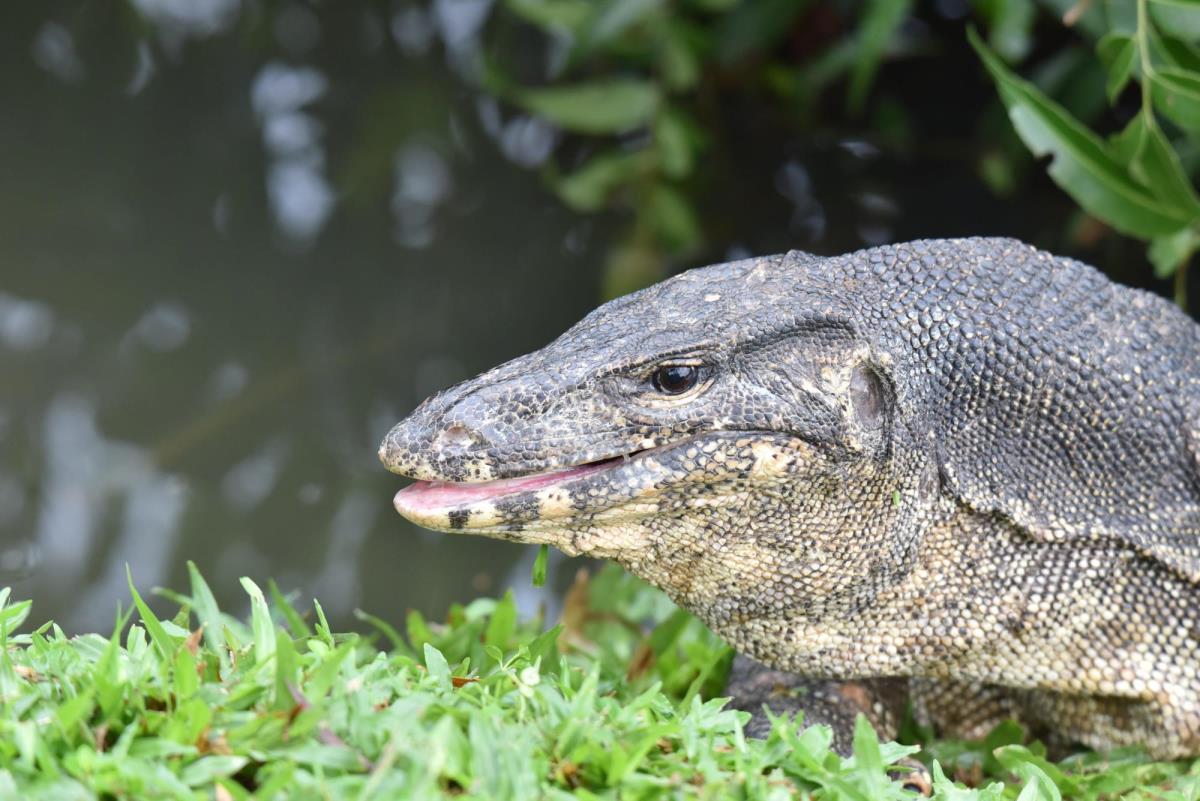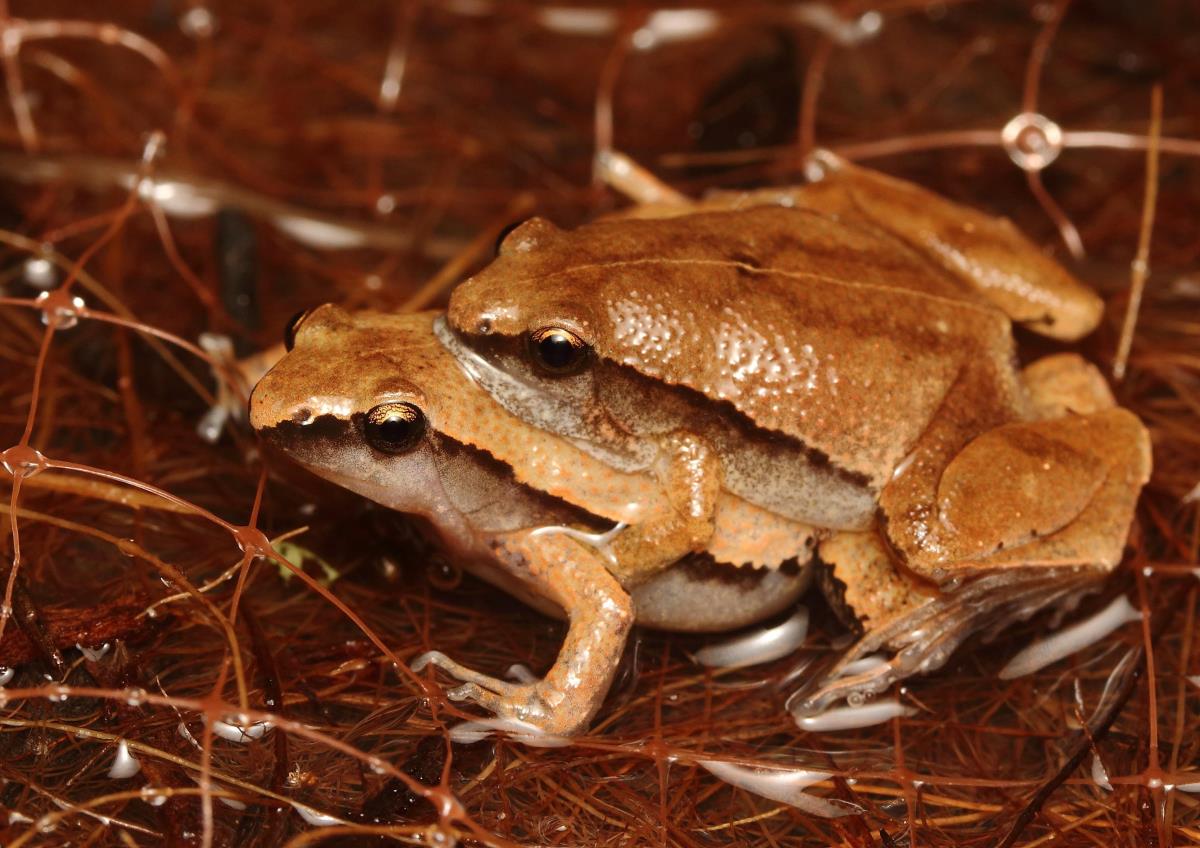Reptiles of Jurong Lake Gardens
Malayan Water Monitor
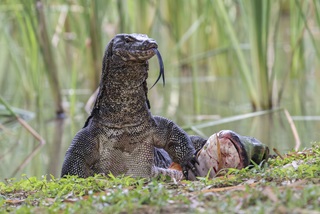 Photo credit: Loke Peng Fai Photo credit: Loke Peng Fai |
 Two males wrestling. Photo credit: Perlyn Chng Two males wrestling. Photo credit: Perlyn Chng |
| Scientific name: | Varanus salvator |
| Common name: | Malayan Water Monitor |
| Family: | Varanidae |
 Up to 3 m Up to 3 m |

It is a large greyish brown lizard with leathery skin and non-overlapping scales. Its tongue is slender and forked. In Singapore, it is often mistaken for the Estuarine Crocodile (Crocodylus porosus) and is also a smaller relative of the Komodo Dragon (Varanus komodoensis). You can usually spot a few of them roaming around Jurong Lake Gardens.

Diet and Behaviour
The Malayan Water Monitor eats fishes, frogs, crabs, birds and other small animals, and has been known to scavenge on dead animals. It hunts during the day. This generalist diet allows it to be very adaptable to even highly disturbed environments.
These reptiles are usually shy, preferring to run from disturbance. It is advisable to leave them alone as they may become aggressive when cornered.
Where is it found?
It can be found in our forests, mangroves, parks and gardens, and tends to stay close to water bodies. It is mainly terrestrial but can also climb trees. It can sometimes be seen diving into the water from treetops at mangroves at Pasir Ris Park and Sungei Buloh Wetland Reserve. It can also be found in urban areas, usually near canals. It is distributed from Sri Lanka and southern China to Southeast Asia.
Did you know?
When you see two monitors “hugging” each other, they are actually two males engaged in a wrestling match. The one that pushes the other onto the ground wins the favour of the female monitor they are trying to impress!
Changeable Lizard
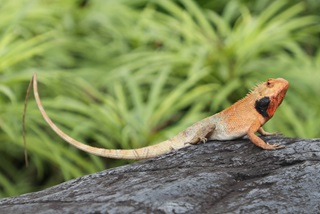 Male in breeding colours. Photo credit: Ruth Tan (NParks) Male in breeding colours. Photo credit: Ruth Tan (NParks) |
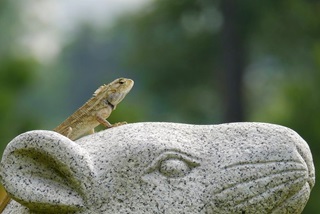 Male in non-breeding colours. Photo credit: Perlyn Chng Male in non-breeding colours. Photo credit: Perlyn Chng |
| Scientific name: | Calotes versicolor |
| Common name: | Changeable Lizard |
| Family: | Agamidae |
 Up to 38 cm Up to 38 cm |

This introduced lizard is commonly spotted on tree trunks in our parks and urban areas. It is often mistaken for a chameleon, which is not found in this region. It has a stout body with ridged scales and a spiny crest along the middle of its nape and back. Its long tail can grow up to twice its body length!
They are sexually dimorphic. Males are larger with swollen cheeks and develop bright orange heads with a black blotch on their cheeks and throat during breeding season.

Diet and Behaviour
It eats insects and other smaller lizards. It is active during the day and is often found basking on bushes and trees. During breeding season, males become more territorial and can be seen displaying head bobs and “push-ups” to attract females.
Where is it found?
The Changeable Lizard was believed to have been introduced into Singapore in the 1980s and has rapidly spread across the island, including urban areas. Our native lizard, the Green Crested Lizard (Bronchocela cristatella), has been largely displaced by the Changeable Lizard and is now not commonly seen.
Its native range encompasses the Middle East, the Indian Subcontinent, China and Southeast Asia. It has been introduced to Singapore, the United States and Brunei, among other places.
Did you know?
Unlike many lizards, it does not drop its tail when in danger. This phenomenon, called autotomy, acts as a distraction to predators to help the lizard escape.
Common House Gecko
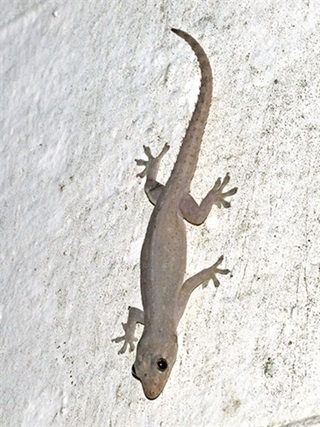 Photo credit: NParks Flora&FaunaWeb Photo credit: NParks Flora&FaunaWeb |
| Scientific name: | Hemidactylus frenatus |
| Common name: | Common House Gecko or Spiny-tailed Gecko |
| Family: | Gekkonidae |
 13 cm 13 cm |

This common gecko has thin skin and non-overlapping scales. Its toes are expanded into pads that allow it to stick to vertical surfaces such as trees and walls. It has whorls of small spines on its tail unless the tail had been autotomised (dropped) and regrown.

Diet and Behaviour
Geckos are nocturnal lizards that hide during the day and are often seen climbing walls of buildings in search of insects at night. True to their name, they have a preference for urban environments. They can carry out autotomy, where they shed their tail as a self-defence mechanism.
Where are they found?
It is very adaptable and is often seen in urban areas and nearby forests. While it is a tropical lizard that is native to Southeast Asia, it has also been introduced to many countries in the Americas, Pacific and other parts of Asia where it has negatively impacted native gecko species.
Red-eared Slider
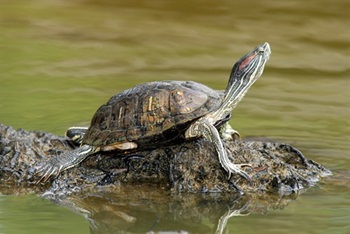 Photo credit: Cai Yixiong, NParks Flora&Fauna Web Photo credit: Cai Yixiong, NParks Flora&Fauna Web |
| Scientific name: | Trachemys scripta elegans |
| Common name: | Red-eared Slider |
| Family: | Emydidae |
 Shell length: up to 28 cm Shell length: up to 28 cm |

These terrapins are a common sight in Singapore as they are popular pets. However, they are an exotic species. They have a dome-shaped shell that is olive brown with yellowish streaks. They are easily identified by the broad red stripe behind their eye. Some individuals can be found in the Eco Pond at Lakeside Garden. The shell of a typical Red-eared Slider grows to about 15-20 cm long.

Diet and Behaviour
While they will eat whatever they can find, they are mostly herbivorous. As they are cold-blooded, like other reptiles, they often need to sunbathe to maintain their body temperature. You can often spot them lying on rocks motionlessly, basking in the sun.
Where is it found?
Due to the release of unwanted pets, the Red-eared Slider is found in almost every freshwater pond and reservoir in Singapore. It is native to North America and is the most widely traded pet reptile in the world. It is mostly bought as an attractive juvenile but is often released into the wild when it reaches adulthood by irresponsible pet owners.
Did you know?
It is illegal to release or abandon any animal in our parks and nature reserves. The Red-Eared Slider’s ability to survive in a wide range of freshwater habitats makes it a potential threat to our native aquatic biodiversity!
Oriental Whip Snake
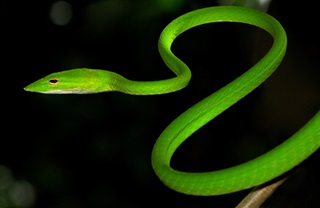 Photo credit: Daniel Ng (NParks) Photo credit: Daniel Ng (NParks) |
| Scientific name: | Ahaetulla prasina |
| Common name: | Oriental Whip Snake |
| Family: | Colubridae |
 Total length: up to 1.9 m Total length: up to 1.9 m |

Adults of this beautiful snake are a striking bright green, while juveniles are brownish. It has yellow eyes, with horizontally elongated pupils.

Diet and Behaviour
It eats mainly small lizards as well as frogs and small birds. Its body colour camouflages it well among the foliage during the daytime when it is most active.
When threatened, it will extend its tongue and leave it out as a warning. It is usually docile but is mildly venomous.
Where is it found?
The Oriental Whip Snake is arboreal, meaning it lives in trees and bushes. It is common in our forests, urban gardens and coastal areas like mangrove forests. It is found throughout Southeast Asia, China, Indochina and the Indian subcontinent.
Did you know?
While it may seem like the female Oriental Whip Snake gives birth to live young, this is actually a case of ovovivipary, where the eggs produced by the female hatch within its body!
Banner: Malayan Water Monitor. Photo credit: Nicholas Kee (NParks)


